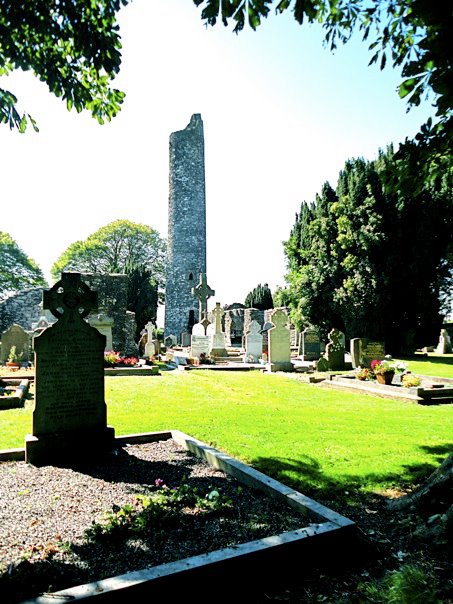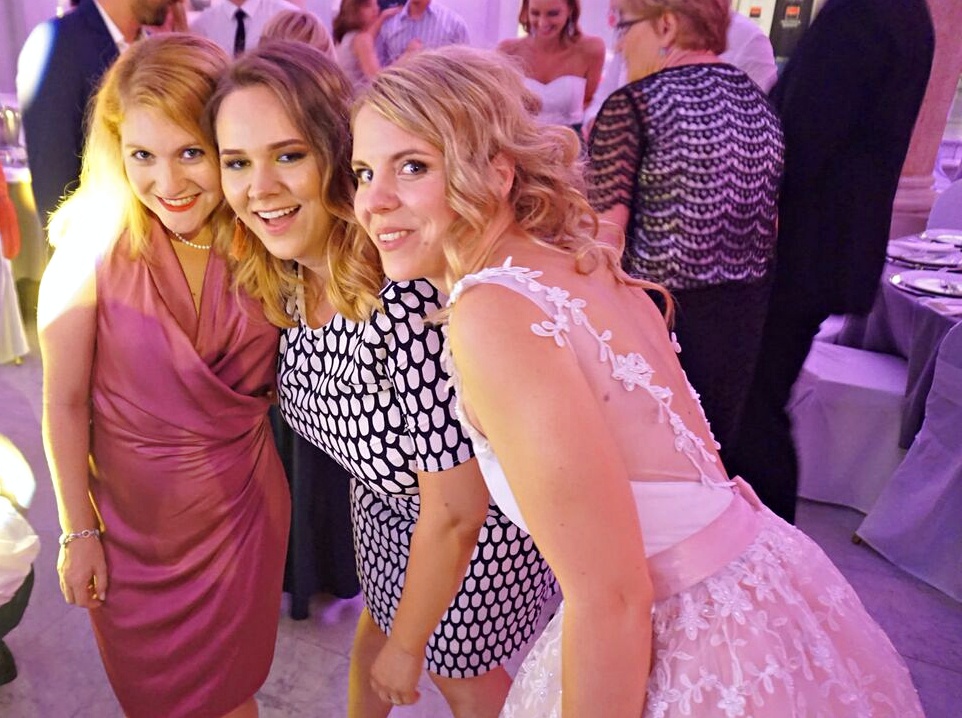“This is where the prisoners waited before they went to the execution spot?” I asked again, hoping I misheard.
“Yep.”
The driveway stretched before me, the darkness elongating it. I wondered if the bushes, twisting together on either side of the towering stone walls, had always been there or if their shadows simply loomed ominously from the flickering streetlamp, creating the illusion that they overpowered the driveway. I stood alone on the street edge, thinking about the numerous times I had walked down the lane to the house without a passing thought. Every morning at 8am, every afternoon after returning from the excavation site, every evening for dinner, sometimes at 2am when I stumbled back after a few pints of Guinness.
I picked the dirt from underneath my fingernails, debating if I should go back to the hotel and stay the night with Laura and Marye Claude. All you have to do is walk down the driveway, I thought to myself. But then there is the ground floor… The front door faced the living room. The hallow blackness of that room always seemed to penetrate the rest of the house. A converted cellar, I appreciated its presence the first day in the three-story house. The arched stones painted white overlooking the river, the mismatched ancient furniture, the bulky television which only played one channel. I found its quirk endearing. With no one else staying in the house, despite its online listing as a “hostel,” it made a good place to eat my meals in the early evening.
“Hostel” in Ireland
The owner was a young woman in her thirties with jet black hair. She said she would come over weekly to collect my payment. People very rarely checked in to the hostel. It didn’t have a reception as most do. No one lived in the building like most hostels. It was simply a house with rooms one could rent. She gave me the key to the front door and I transformed into the unofficial receptionist. I decided my service charge could be sleeping in the top floor master bedroom despite having only paid for a dorm bed.
An older man appeared at the house a few days after I had arrived. He introduced himself as one of the owners. The woman had never mentioned another owner. I tried to ask his relation to the woman who I had paid, but his thick Irish accent proved inaudible. So I smiled and confidently said, “Oh! Okay.” An honest thief, I told him I stayed on the top floor but he didn’t bother to charge extra. After that I decided I liked him, despite being confused as to who he was, or anytime he spoke. We attempted to chat for some time. I told him I was in Ireland for a month working on the Blackfriary Archaeological Site, a 12th century Dominican friary. I assumed he told me interesting things but I struggled to understand; the ruggedness of his words caused me to squint as he spoke, cocking my head as if putting my ear closer to him would someone translate one English into another.
In fact, the only thing I managed to understand about the house was the origins of the living room. I had told him how much I liked it; it boasted a simple yet grandiose elegance. I asked if the room used to be a wine cellar.
“Prison,” he corrected me, simply. He walked over to the window and stared out at the little river babbling next to the house.
“Long time ago,” he said, “16’t century. ‘Tere was a tunnel ‘ere,” he motioned to the window, “leadin’ to ‘te Church up next to your friary. Used to take ‘em up ‘te tunnel to ‘te Church before hangin’ ‘em.”
“This is where the prisoners waited before they went to the execution spot?” I asked again, hoping I misheard.
“Yep.”
In the next month I lived in the house he never visited again so I never got the opportunity to ask if he was joking with me or what his relationship was with the house, and with the woman who collected my payment.
Haunting
The afternoon on which I had heard the story, I thought it was wonderful. Riveting, really. I couldn’t wait to tell my friends what an interesting house I’d be staying in for the next month. Coincidentally, after the one time visit of the man, the house began to creak at night. Sometimes I wondered if someone had checked in during the day while I worked at the archaeological site. Maybe they spent the evening at one of the local pubs and just arrived back late. But few people checked into the hostel, and I doubted anyone could even get inside since I now possessed the key to the front door.
About two weeks into the excavation, a girl discovered a fully intact skull. The second of the summer. The first skeleton had been discovered next to the cloister wall before I arrived so the archeologist purposely changed the location of our digging. “I don’t want to find any more skellies” she proclaimed.
But we just kept finding skeletons. A few days after the second discovery, I had the honor of stumbling across the remains of a baby. At first I assumed animal bones. But then I noticed the distinguishing feature of “feet,” only humans could bear. Little tiny feet. Her skull and torso I found in a vertical slice of the cutting wall, her legs horizontal across the cutting floor. The coffin and body must have shifted and broken during the centuries. Unlike the adult skeleton discovered by my colleague, the bones of the baby dissolved into dust the moment I attempted to transfer her to the artifact box.
In my archaeological course work, the sensitivity of excavating bodies was dictated to us routinely, carved into our minds with the tools of the trade. In Ireland, the bodies served a point of entertainment. Pictures taken with the skull of the deceased, boxed in cardboard and left to sit on the “cooker” (kitchen stove). Our team daily upset the century-old sanctity of death and burial, disheveling hundreds of years of sleep. No one laughed at the baby. Yet her dusty remains were packaged into two little plastic lunch containers, the new resting spot for those souls unlucky enough to once again meet sunlight and a careful trowel.
The creaking become worse.
Any human remains of Native Americans in the US must be turned over to the tribe or reburied. I felt like I was betraying history; betraying a culture that no longer existed to defend itself again science. I felt haunted. Perhaps by a woman born in 16th century Ireland as well as my subconscious, conjured to the present by the sadness of her unearthed spawn and my own guilt created from a learned immorality. Perhaps by the energy of fear left over from men awaiting their own burials and inevitable excavations.
One weekend some Slovakian girls checked into the hostel. One night I could hear them rummaging around in their bags downstairs and finally felt relieved to know that for once the noises weren’t a product of my imagination. But then I remembered they had told me they were leaving the morning before. They left for Dublin already.
I slept with my lights on that night.
The Driveway
The cool July air in Ireland unsympathetically pinched my neck. I started walking down the driveway. I’ll go down the path, go in the house, go up the stairs, and go to bed. There are no ghosts. They don’t exist. The creaking is just the house.
I stopped halfway, the great stone walls on either side of me awaiting my decision, their shadows taunting my superstition. I turned around and walked back to the street. The hotel would be nicer, anyway.





Great story! I well remember being spooked at a B&B in Edinburgh. The mind (or the ghosts?) can certainly play tricks on us.
I don’t remember this story. I like to tell your story about the B&B in New Zealand though!